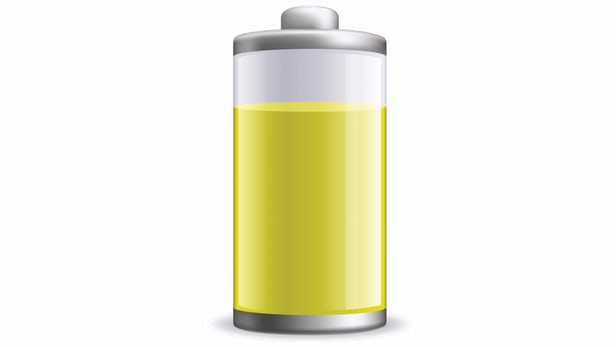As any elementary-aged child preparing for his or her science fair project will tell you, batteries can be powered by lemon juice to drive a little toy car across the room. But of course, we all grow up and go to work and life becomes more complicated. Figuring out how to develop a commercially viable battery for readily available and cheap materials, for example, is an elusive goal for many researchers. The latest development comes from Stanford University, where researchers created an aluminum-ion battery that uses an electrolyte material made of urea, the main component of urine (after water).

Image source: depositphotos.com.
This isn’t the first battery or device to use pee power, either. In the past, urine has been used to power dead phone batteries and pee-powered toilets were even once used to provide electricity to disaster zones.
The difference here is that this new battery is designed for grid storage of electricity from renewable energy sources, such as wind and solar. It’s also an update of a first-of-its-kind aluminum-ion battery introduced in 2015 by Stanford professor Hongje Dai and his team. The original version used a chemical mixture known as EMIC (1-ethyl-3-methylimidazolium chloride) as its main electrolyte ingredient, which, when mixed with aluminum chloride, makes a liquid salt, or ionic liquid.
But EMIC is expensive, which prompted the researchers to look at alternatives. The new battery is mostly the same, except for the use of urea instead of EMIC, which is 100 times cheaper and produced commercially as a component in fertilizers. According to Dai, this battery “actually has good performance.”
Although the battery doesn’t have the same energy capacity of a lithium-ion battery (its energy density is less by half), the charge-discharge rate is higher, it’s nonflammable, and charges in 45 minutes, on top of being cheaper.
“Urea is a good ingredient for a battery to be made on large scales for grid storage because it is so cheap,” said Stanford PhD candidate in chemistry and author of a paper on the battery, Michael Angell. “Also, the Coulombic efficiency of the battery is very high, 99.7%, which suggests that the cycle life is very long.”
The Coulombic efficiency is a measure of the amount of charge you get back from the battery, divided by the amount of charge you put in originally. This means that the chemistry of the battery reaction is reversible, which leads to long cycle life.
For commercial viability, a grid storage battery would need to have at least a 10-year lifespan. The urea battery has reached 1,500 charge cycles in lab conditions, but the researchers are pushing to extend that by tinkering with the battery's chemical processes. Currently the most attractive feature is its low cost.
The team's findings were originally published in Proceedings of the National Academy of Sciences.
Source: Stanford University
Advertisement
Learn more about Electronic Products Magazine





